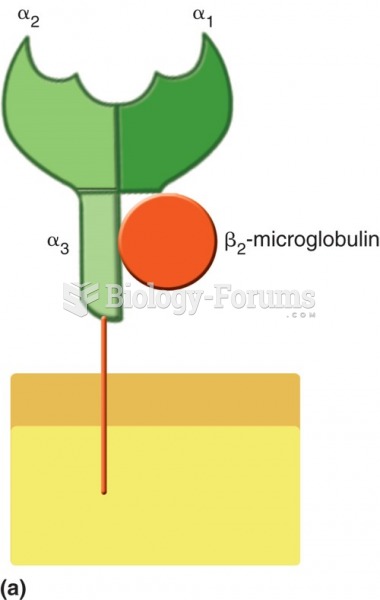|
|
|
After 5 years of being diagnosed with rheumatoid arthritis, one every three patients will no longer be able to work.
Though newer “smart” infusion pumps are increasingly becoming more sophisticated, they cannot prevent all programming and administration errors. Health care professionals that use smart infusion pumps must still practice the rights of medication administration and have other professionals double-check all high-risk infusions.
Pregnant women usually experience a heightened sense of smell beginning late in the first trimester. Some experts call this the body's way of protecting a pregnant woman from foods that are unsafe for the fetus.
The types of cancer that alpha interferons are used to treat include hairy cell leukemia, melanoma, follicular non-Hodgkin's lymphoma, and AIDS-related Kaposi's sarcoma.
Throughout history, plants containing cardiac steroids have been used as heart drugs and as poisons (e.g., in arrows used in combat), emetics, and diuretics.
 Estimating the molecular weight of a protein. The electrophoretic mobility of a protein on an SDS po
Estimating the molecular weight of a protein. The electrophoretic mobility of a protein on an SDS po
 Shown is the electronic circuit inside a ceramic disc MAP sensor used on many Chrysler engines. The ...
Shown is the electronic circuit inside a ceramic disc MAP sensor used on many Chrysler engines. The ...





